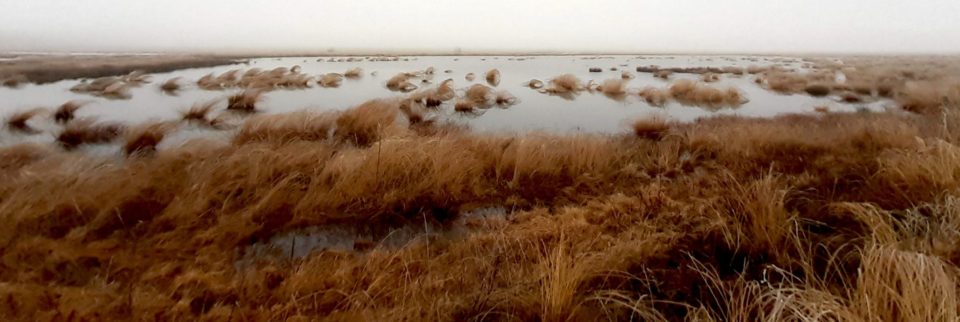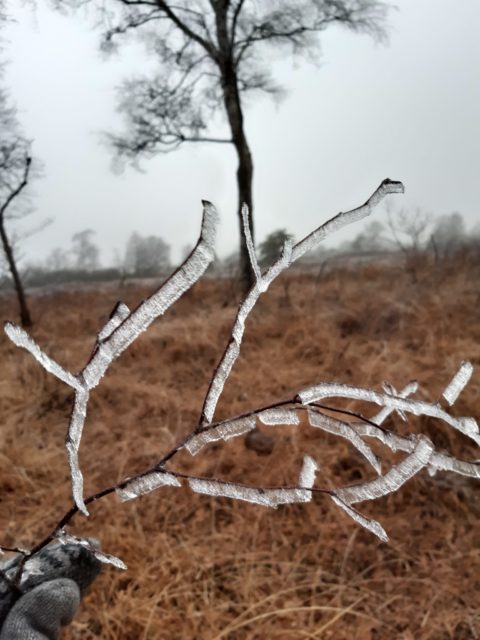
Peatlands as part of the bigger climate picture
-
Coastal resilience
-
Coastal wetland conservation
Peatlands may be one climate puzzle piece, but should we not be looking at the bigger picture?
It is 2020, and the world is most definitely spinning. In the past few years, the awareness of our planet’s climate crisis has seemed to exponentially increase. We have seen tens of thousands of children walk out of school asking for a better and safer future, there is now a global climate agreement signed by 197 countries and increase the voices of indigenous peoples are coming to the fore. However, the danger is that climate, ecological and social issues are often seen as separate, and regularly not enough attention is given to the role of healthy ecosystems for all three of these areas – which brings me to peatlands.
Peatlands have been strongly connected to early human civilisation, as they are on the edge between land and water and are often seen as the divide between life and the afterlife. However, the last century, these boggy wetlands became widely considered good-for-nothing wastelands. So, around the world, many peatlands were unanimously drained, excavated, mined and burned. Today, around 15% per cent of peatlands are considered to be severely degraded[1]. But with all this ‘climate talk’, there seems to be a new wave of appreciation towards the world’s bogs and fens. However, there is more to peatlands than just climate. In their natural state, they also provide a number of other ecological and social services, among others: flood prevention, biodiversity habitat, water filtration and purification.

Recently, Nature magazine published an article entitled “bringing back the bogs”, written by Virginia Gewin. This piece looked at the ongoing large-scale restoration work on the Scottish “flow country”. The content of the article predominantly analysed the project in terms of its carbon results and highlighted some of the restoration challenges. These ranged from technologies and monitoring techniques to levels of degradation and how the peatland responded to the re-wetting process. What was concerning, or at least noteworthy, was that this restoration project seemed to be intimately connected to Scotland’s climate emission targets, and thus there seemed to be little analysis of the other benefits of the peatland ecosystem.
Wetland International’s peatland restoration projects have ranged from the Ruoergai, high-plateau peatlands in China, to the thick tropical peatlands of Indonesia, the vast smoky Russian peatlands, to the highly developed low-lying fens of the Netherlands. During these projects we have seen biodiversity return, carbon emission reduction, floods decrease and fires dampen. But we have also seen that the social dimension to these restoration projects is invaluable. If there is one point that were to connect all of these projects, it would be found somewhere in the intersection between climate, social and ecological dynamics.
What Wetlands International found in the PeatRus project near Moscow, was that local people did not care so much about carbon, but saw the importance of restoration because of the huge fires that they had been having[2]. For them, re-wetting the peatlands meant less smoke in the air and less threat of fire. In Indonesia, during the PaludiFor project, drained peatlands were causing land subsidence and, therefore, re-wetting meant that homes would be saved as parts of the country would not get submerged underwater.

My point here is that wetland ecosystems are often the glue that brings together challenging climate, ecological and social issues. If peatland protection is limited to one narrow purpose or goal, like the climate, this could run the risk of ignoring the multitude of other reasons to preserve them. It could ignore the ecological richness of undisturbed peatlands or the invaluable social benefits that healthy peatlands offer. Did you know that very recently, the world’s largest peatland was discovered in the Congo basin? Its recorded area is larger than England[3]. Who knows what the world would lose if it is drained.
So when we talk about peatlands…let’s look beyond carbon. After all, you can’t solve a complex puzzle without the bigger picture.
Article was written by Frankie Turk, an intern at Wetlands International (Communication and Advocacy) and member of the RE-PEAT youth group.
